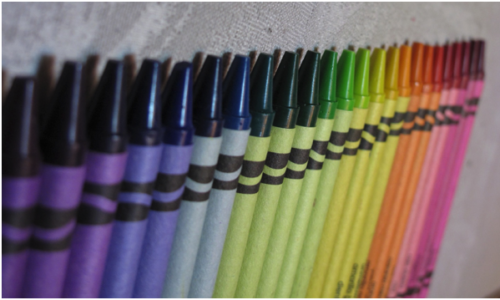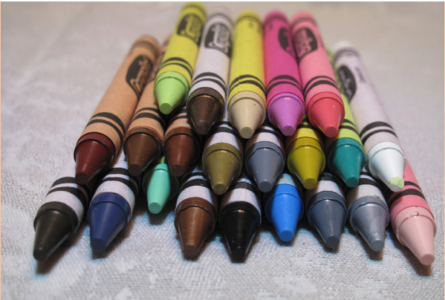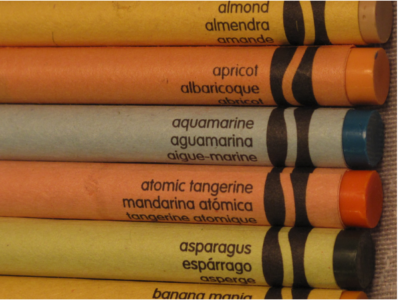Editor’s Note:
We are very pleased to welcome John Seymour to Inkjet Insight. John is a gentleman of somewhat intimidating intellect tempered by childlike charm and humor. (I will be in trouble for the childlike comment – but I think the crayons speak for themselves.)
His expertise covers a broad range of disciplines including color science, image processing, and print control systems. He currently holds nineteen US patents and has published over thirty papers. You can find some of his other work under the moniker “John the Math Guy.” Enjoy the first in the series with John. He is starting us off easy, but stay tuned.
Arranging your crayons- a prelude to color management
Imagine you are given a box of Crayola* crayons. I’m not talking the 16 or 24 crayon collections. Not the 64 crayon box either. Possibly you are given the 96 crayon box. But, remember that kid in your class who got the 120 crayon box that everyone was envious of? Imagine you are given that box. Now, the task before you is to arrange these crayons in a line. How will you do it?

You will find a collection like this in the lab of every real color scientist.
You may initially be inspired by the rainbow, arranging them according to ROYGBIV (red, orange, yellow, green, blue, indigo and violet).

The Craynbow
This ROYGBIV line of crayons has a nice feel to it, but I count only 24 crayons. That means 80% of the crayons are left in a pile of misfits off to the side. In an act of discrimination against everybody, none of the crayons that match human skin (the ones named peach, piggy pink, almond, tumbleweed, goldenrod, desert sand, fuzzy wuzzy, sepia, burnt and raw sienna, brown, and chestnut) have a place in the rainbow.

Crayons sent to the Island of Misfits
You could find a number of other ways to chromatically arrange your crayons, but you were given a practically impossible task. The only way that I know to arrange a box of crayons into a line that makes sense is illustrated below. Don’t notice the patter?
Hint: Look at the names of the colors.
Another hint: English speakers may put the crayons in a different order than Spanish or French speakers. Think you got it? If so, then find the two crayons that should be switched around. (Be the first to leave a comment below, and win the undying admiration of everyone who reads this blog post!)

Truly creative and non-artistic people will think outside of the crayon box.
There are three attributes of color
Color can’t be arranged in a line because it’s three-dimensional. The dimensions are hue angle, lightness value, and chroma/saturation. Stay tuned for my next post as we extend the crayon discussion into the third dimension.
John Seymour is a consultant in color science and mathematical algorithm development. He is also the Vice President of Papers for the Technical Association of the Graphic Arts, and a member of the Committee for Graphic Arts Technologies Standards, and ISO TC 130. Find him on LinkedIn.
*Crayola, Crayola art products and swirl logo design are copyrighted and are a registered trademark of Crayola Properties, Inc.

Comments
I tend to take my asparagus before my atomic tangerines, generally.
There is really no coming back from the atomic tangerines, is there?